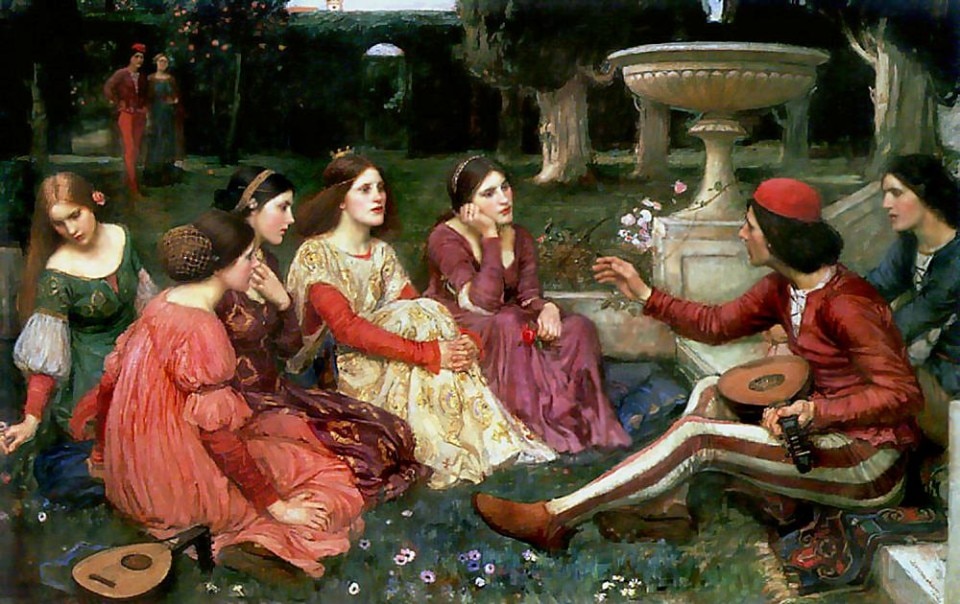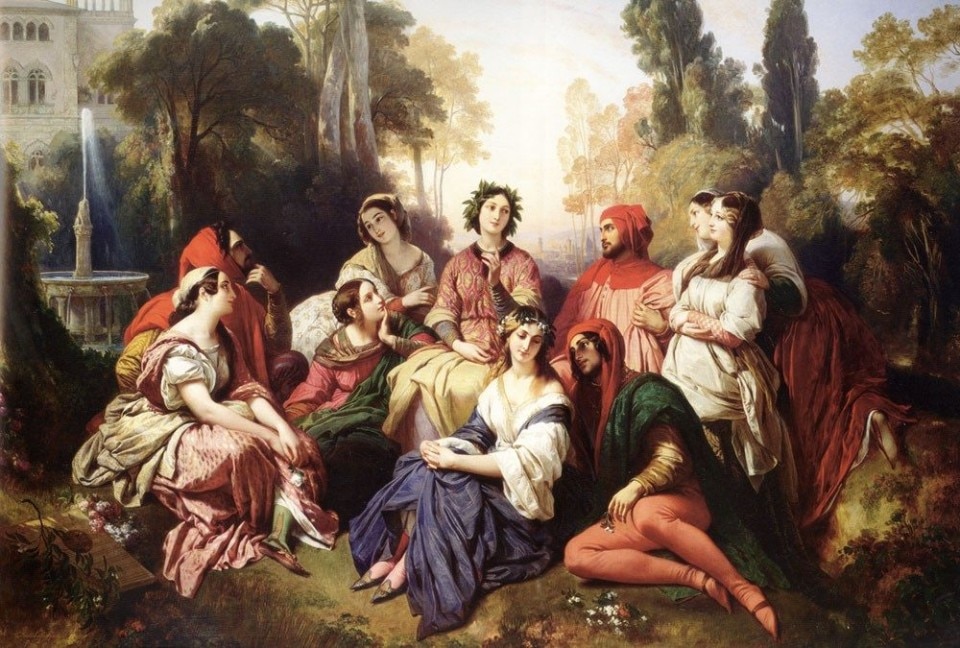In his Decameron, Giovanni Boccaccio reveals that the “deadly pestilence” had started in the East, where it killed a huge number of people, before its “miserable hand” gradually reached the West. “Despite all that human wisdom and forethought could devise to avert it, as the cleansing of the city from many impurities by officials appointed for the purpose, the refusal of entrance to all sick folk, and the adoption of many precautions for the preservation of health (...) towards the beginning of the spring of the said year the doleful effects of the pestilence began to be horribly apparent by symptoms that shewed as if miraculous”.
In 1348, because of the Black Death, a group of young people composed of seven women and three men decided to flee from Florence and find refuge in a villa in the countryside. They spent ten days there, telling each other stories to kill time.
The situation described by Boccaccio is a perfect snapshot of what is happening today. We may be dressing differently now, but the lockdown was the only right answer, the only way to defend ourselves, in the past as it is today. “The virulence of the pest was the greater by reason that intercourse was apt to convey it from the sick to the whole, just as fire devours things dry or greasy when they are brought close to it”.
In the past as in present days, from the Middle Ages up to this year, we find multiple pictorial representations of a work that is considered to be the progenitor of the Italian vernacular literature, and that had a great influence on the works of many other authors, such as Geoffrey Chaucer in his Canterbury Tales.

In the first half of the 19th century, German painter Franz Xaver Winterhalter, appointed court painter of King Louis-Philippe I, painted a scene from the Decameron, where seven women and three men in a locus amoenus are listening to a story told by that specific day’s narrator.
They look languid, not at all worried about what is happening around them, carefree, amused, with flowers in their hands, in an exact narrative reconstruction: “They therefore walked abroad, carrying in their hands flowers or fragrant herbs or divers sorts of spices, which they frequently raised to their noses, deeming it an excellent thing thus to comfort the brain with such perfumes.” In the background, thanks to its architecture, we recognize the city of Florence – Brunelleschi’s dome, which was built way after Boccaccio wrote the Decameron, was inserted in the painting as a fantastic element that reminds us of the whimsical decisions of the Grand Tour artists. We can also spot the Arno river, which is inserted in the scene in an exact way and sets the villa of the young protagonists more or less on the hills south of the historic center, just above the Piazzale Michelangelo, which was designed shortly after the painting was made. The palace on the left, the villa where the ten people probably stayed, faithfully reproduces the style and architecture of the time.
A little later than Winterhalter, a group of painters fascinated by courtly love, Shakespearean tragedies, and the works of Dante Alighieri, called Pre-Raphaelites, whose aim was to bring back to life the costumes of an imaginary and nostalgic past, produced various works, including some inspired by scenes from the Decameron. The most illustrious among them was John William Waterhouse, who in 1918 painted “A Tale from the Decameron”. The scene is always set in a locus amoenus, an elegant garden full of flowers, fruit trees and fountains. This time there are nine characters, two of whom are portrayed on the sidelines, perhaps because they are busy, as Boccaccio suggests in his work, doing loving gestures. The subjects are dressed in the clothes of the time, the two medieval lutes look exactly like they did at the time, while the female hairstyles are typical of Pre-Raphaelite paintings.
The scene can be read from right to left: two men are entertaining a group of girls. The girls closer to the two men seem more captivated, excited, while the last girl seems completely absorbed in her thoughts. She looks almost bored and tired, perhaps from having spent too many days isolated. In the paintings, the knight no longer fights for Christ, but, through sentimentality and sensuality, for his lady who replaces the Cross, thus shifting the theme of the pictorial story from historical to sentimental, completely forgetting the topicality of the time where wars, guerrillas and invasions had brought a continuous series of devastations – towns and cities were looted, destroyed by fire, often razed to the ground, while the survivors of the plague opted for several houses, larger, more comfortable and “wheat crops remained abandoned, not reached and not harvested” leading the economy to a total collapse.
An incessant and continuous repetition of events, the theory of past occurrences and reoccurrences, poetic images that reproduce the topical attributes of experience. Today as in the past, literature and painting take the place of Sibylline figures.
Immagine di apertura: Franz Xaver Winterhalter, Decameron, 1837


